↑
01 Background
02 Secondary Research
︎Aging Problems
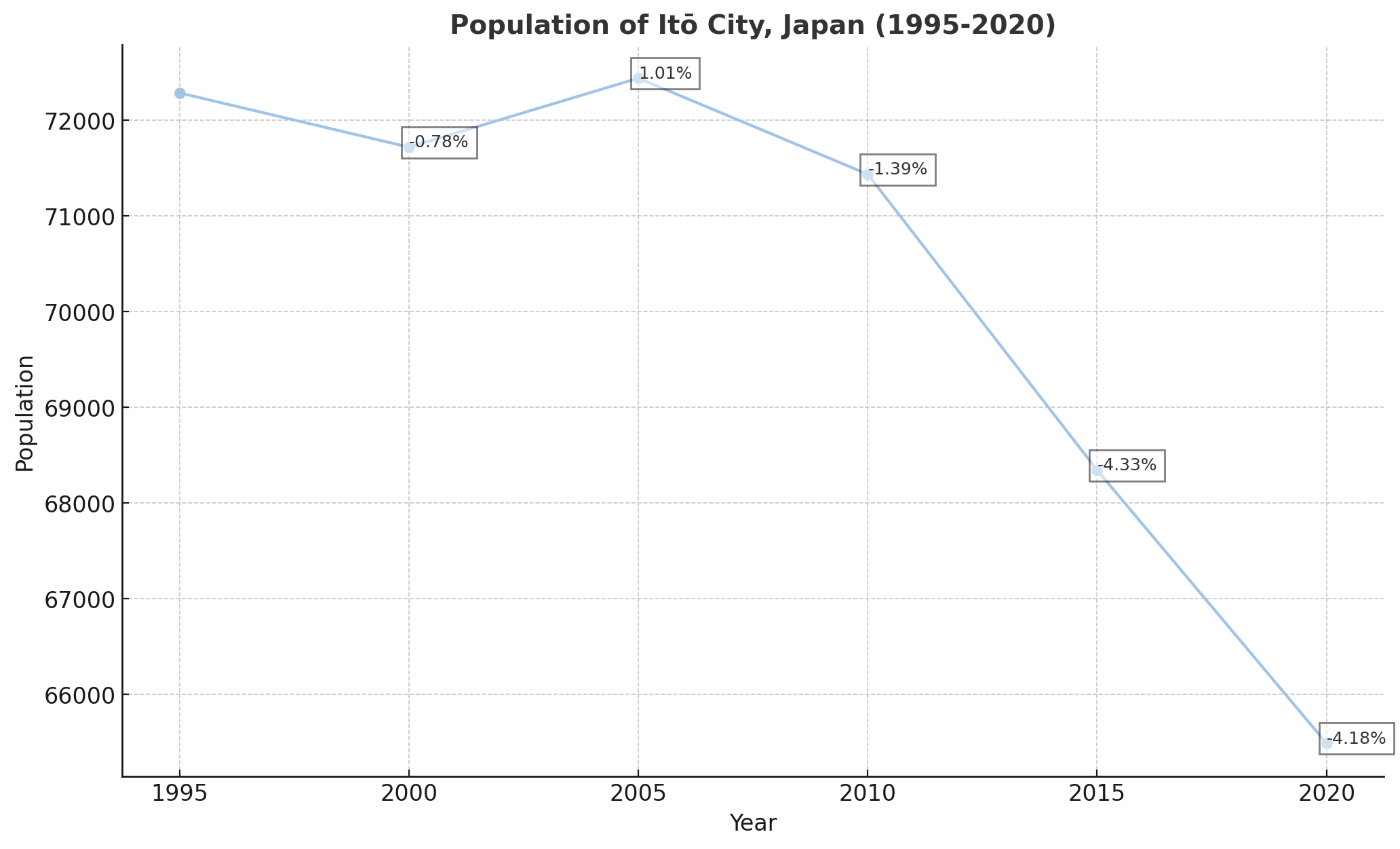
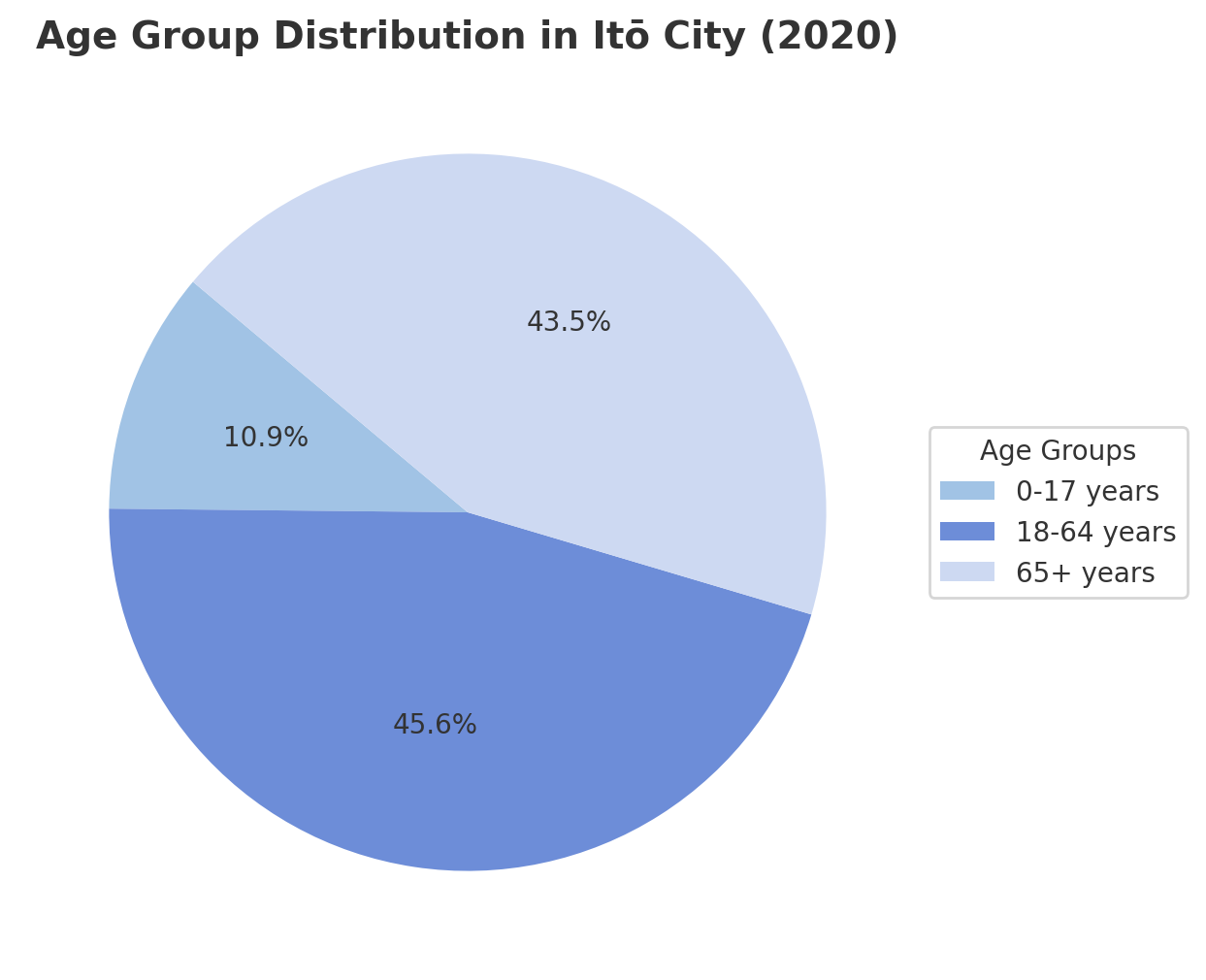
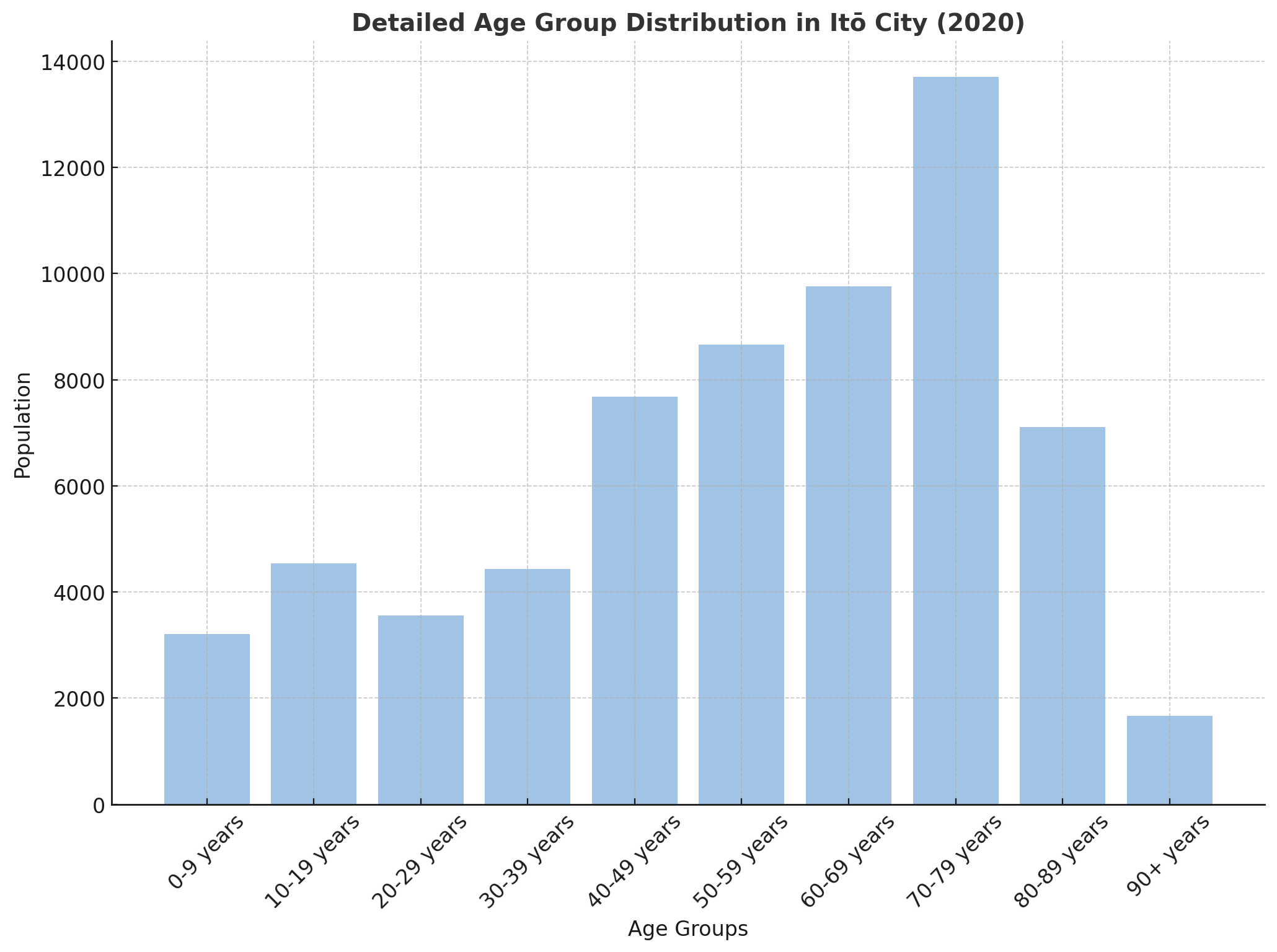
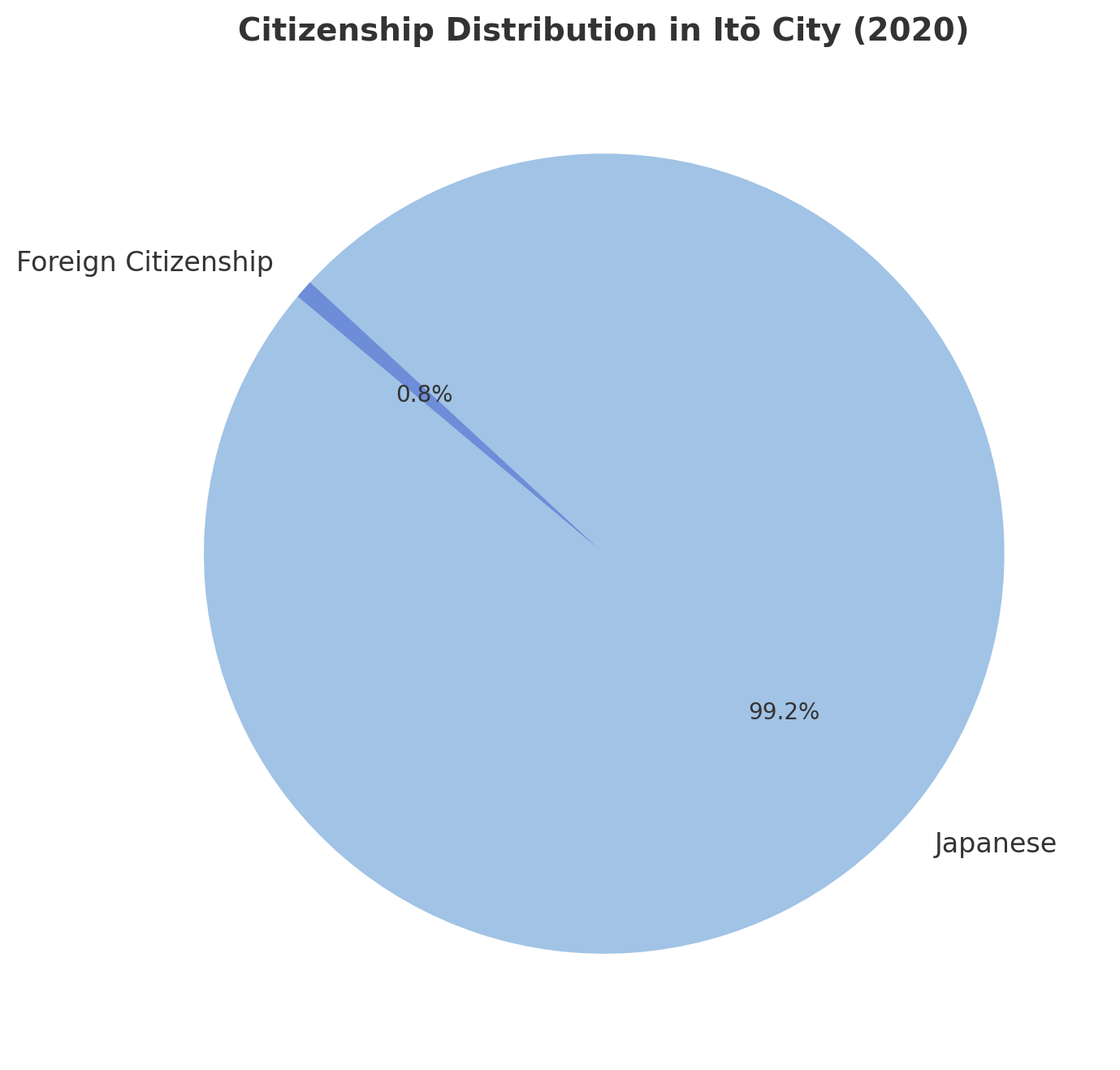
Based on Japanese census data, Itō City's population has steadily decreased from 72,287 in 1995 to 65,491 in 2020. This decline is accompanied by an aging demographic, with significant portions of the population in older age brackets (13,700 aged 70-79 and 9,757 aged 60-69). This trend highlights an aging and shrinking population.
As a result, there's an increasing need for services tailored to older adults, such as healthcare and elder care. The city's predominantly Japanese population and its aging demographic make it less vibrant and potentially less appealing to younger generations and tourists. Current cultural programs in Ito are likely to focus on native customs, reflecting the interests of its aging residents.
As a result, there's an increasing need for services tailored to older adults, such as healthcare and elder care. The city's predominantly Japanese population and its aging demographic make it less vibrant and potentially less appealing to younger generations and tourists. Current cultural programs in Ito are likely to focus on native customs, reflecting the interests of its aging residents.
︎Features
︎Features
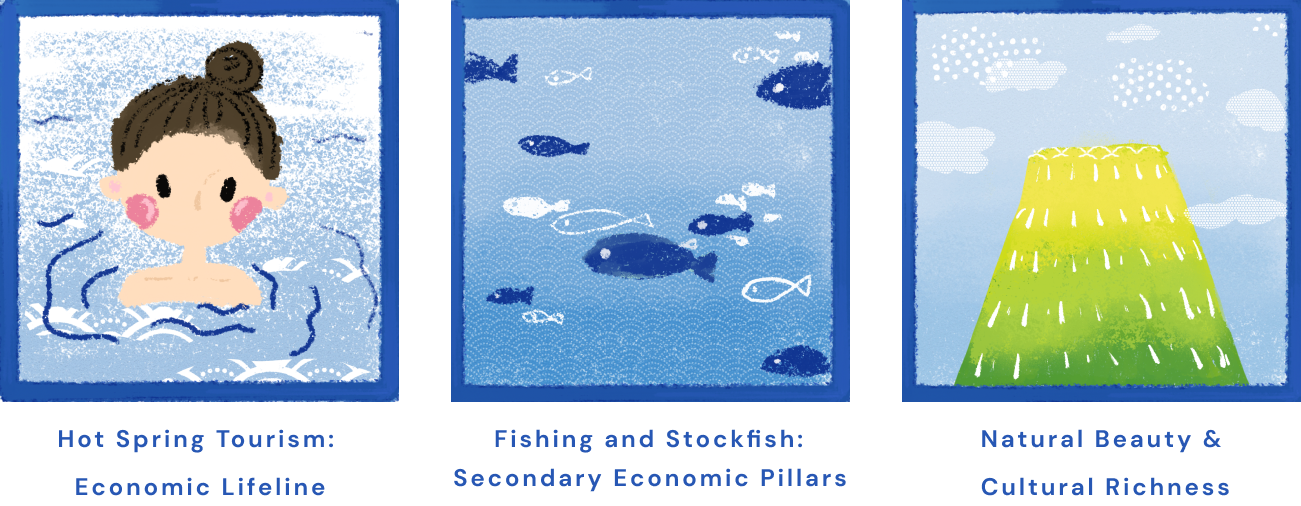
︎Literacy and Artistic Heritage
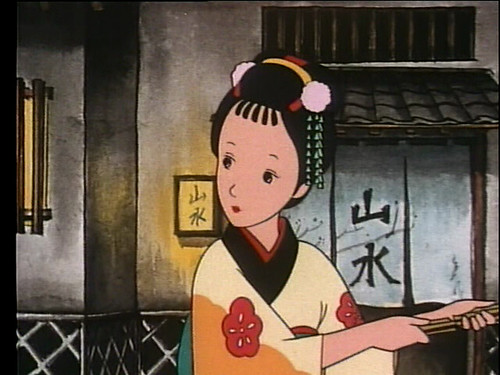
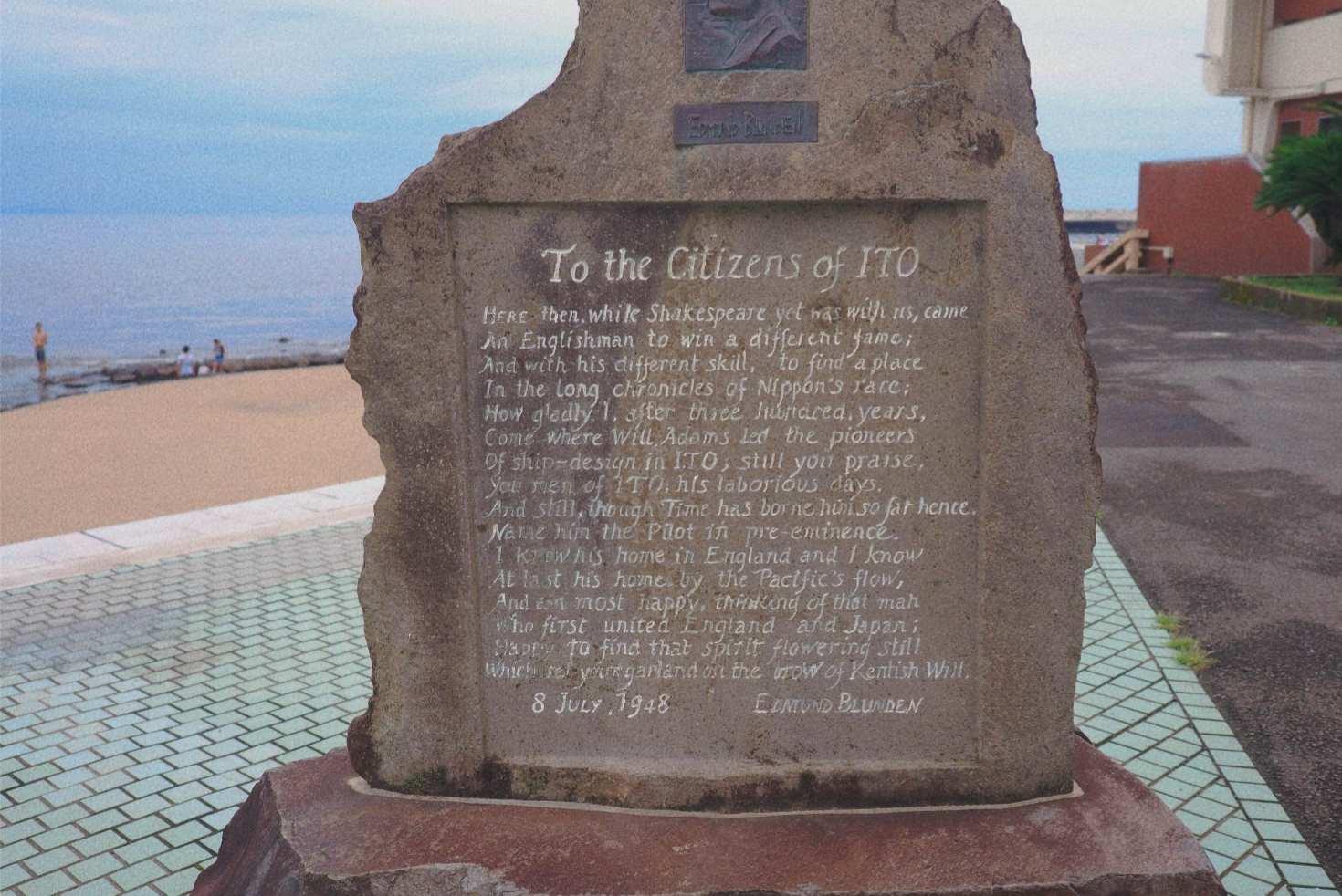

Ito, a city on the Izu Peninsula, is renowned for its serene and inspiring environment. This area has been a sanctuary for many literary and artistic figures. It is the birthplace of Mokutaro Kinoshita, a renowned poet and pathologist. Additionally, it has inspired works such as Yasunari Kawabata's "The Dancing Girl of Izu" and poet Edmund Blunden's "To the Citizens of Ito."
03 Primary Research
![]()
03 Primary Research
︎Persona
︎Persona
In our visitor analysis, we've identified two primary groups: the Leisure-Focused Foreign Group and the Young Explorers Group. The former group is drawn to relaxing activities, seeking tranquility and leisure. However, our primary target audience for the GOLOSO Cycling Rental Store is the latter group - the Young Explorers. These visitors infuse the town with a vibrant and active energy, perfectly aligning with the dynamic spirit of our bicycle rental service. They are not just customers; they're vital contributors to the lively atmosphere we aim to cultivate in Ito.
In assessing the residents' perspectives on revitalizing the local community, we've categorized them into two distinct groups, primarily distinguished by age and lifestyle patterns: the Ambitious Middle-Aged Group and the Content Elderly Group. Understanding their diverse viewpoints is crucial for developing a community revitalization plan that resonates with and respects the needs and preferences of all residents.
04 Initial Ideation![]()
04 Initial Ideation![]()
However, during our initial informal presentation to the local community committee, despite receiving satisfactory and encouraging feedback, we found ourselves less content with our product.
Engaging in extensive discussions with committee members, who shared their personal stories and experiences in Ito, we recognized a disconnect between our map and the current lives of the residents. This realization prompted us to revisit our fieldwork and adopt a different approach for the final product, aiming to create a map that more relevant to the community's present-day reality.
Engaging in extensive discussions with committee members, who shared their personal stories and experiences in Ito, we recognized a disconnect between our map and the current lives of the residents. This realization prompted us to revisit our fieldwork and adopt a different approach for the final product, aiming to create a map that more relevant to the community's present-day reality.
05 Revision
︎Field Trip, Once Again
On our second visit, we shifted from interviewing to an observational 'fly on the wall' approach, focusing more on subtle details and behavioral patterns. This change in perspective revealed aspects previously unnoticed.
![]()
As a result, we conceptualized the next version of our project with a primary focus on the themes of the sea and fish.
Upon further observation, we noticed a distinct pattern in how people choose their walking paths.
05 Revision︎Field Trip, Once Again
On our second visit, we shifted from interviewing to an observational 'fly on the wall' approach, focusing more on subtle details and behavioral patterns. This change in perspective revealed aspects previously unnoticed.
![]()
As a result, we conceptualized the next version of our project with a primary focus on the themes of the sea and fish.
Upon further observation, we noticed a distinct pattern in how people choose their walking paths.
Ultimately, we set out on yet another cycling adventure, following the coastline's ascent. This expedition yielded crucial insights and inspiration. To effectively quantify and visualize our route, we utilized a portable GPS tracker to gather key geographical data.
This data played a pivotal role in enriching our grasp of the spatial arrangement of key attractions and their public image. Such an enriched understanding proved vital in fine-tuning our approach towards the revitalization of local tourism.
We integrated our observations, feelings, and the collected data into the journey map presented below. This map not only reflects our personal experiences but also incorporates the broader public sentiment, offering a comprehensive view of the potential for revitalization in Ito.
︎Visitors Journey Map
︎Visitors Journey Map
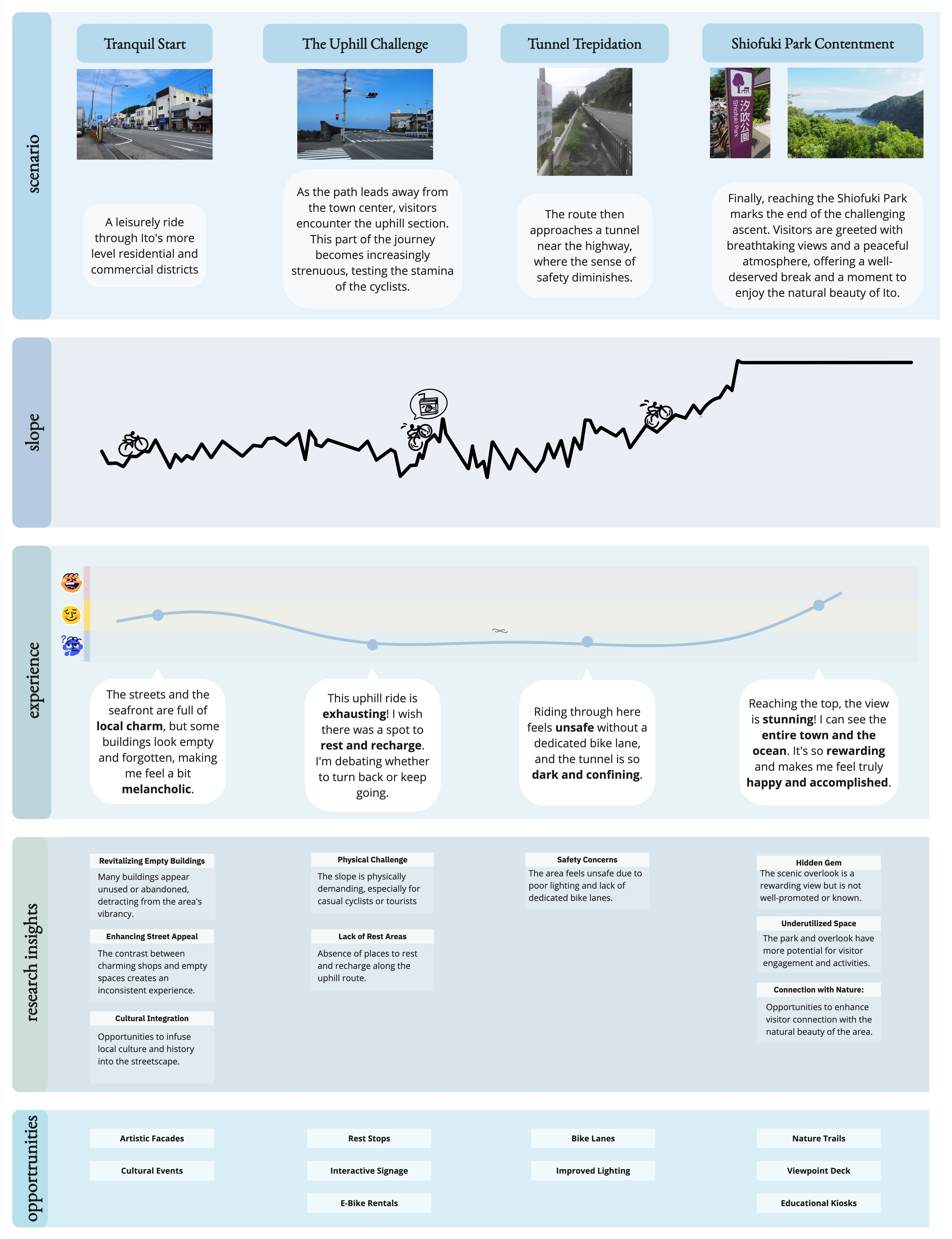

︎Strategic Considerations
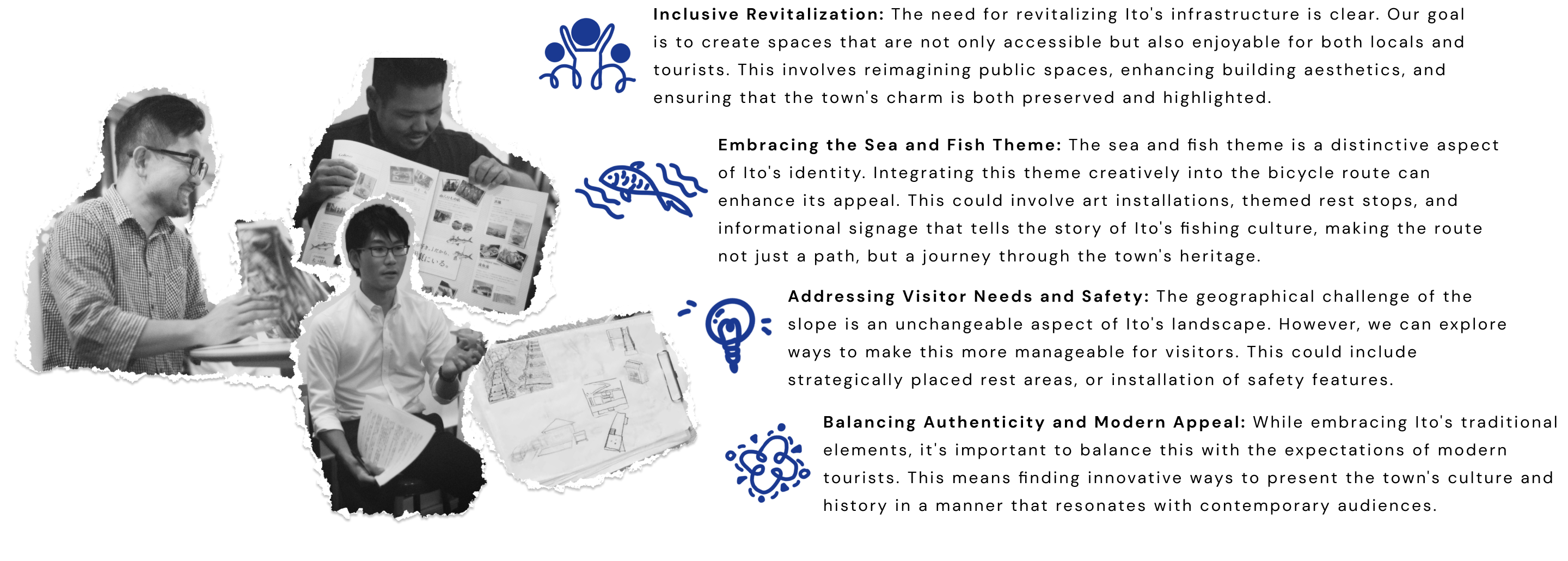
06 Solution
︎ideation![]()
![]()
![]()
![]() In crafting the cycling route, we employed a hands-on method by printing out photos of potential sites and arranging them alongside a map of Ito. This visual and interactive approach enabled us to intuitively design a route that not only highlighted Ito's rich fishing culture but also ensured a seamless and engaging journey for cyclists. By physically mapping out the journey, we could better understand the geographical and thematic connections between sites, leading to a more coherent and captivating experience.
In crafting the cycling route, we employed a hands-on method by printing out photos of potential sites and arranging them alongside a map of Ito. This visual and interactive approach enabled us to intuitively design a route that not only highlighted Ito's rich fishing culture but also ensured a seamless and engaging journey for cyclists. By physically mapping out the journey, we could better understand the geographical and thematic connections between sites, leading to a more coherent and captivating experience.
The design process, constrained by time and tools, primarily involved hand-drawn elements. We used oil pastels and toothpicks for the site logos, which were then scanned for use.
︎the Cycling Map
![]()
![]()
Our narrative, inspired by the lives of local fishermen, parallels the life of an Ito fisherman with the physical journey along our route.
His story begins with carefree childhood days on the beach, learning the art of fishing, akin to the gentle slopes at the start of the route. As he matures into adulthood, he witnesses the evolution of the local fishing industry, marked by the introduction of Western techniques and modern vessels. This period of transformation mirrors the steeper slopes, symbolizing the challenges and changes he faces. His life progresses from a diligent fish market deliveryman to a successful shop owner, husband, and father. These middle years, filled with both struggles and achievements, are like the varying gradients along the route, leading up to the reflective moments at Shiofuki Park. Here, atop the metaphorical and literal high point of the journey, he experiences a flood of memories and emotions.
Encouraging visitors to ride over the mountain and reach the top park, the narrative mirrors the fisherman's long journey upwards, symbolizing perseverance and the reward of reaching life's summits.
︎the Cycling Map
︎User Journey Map
![]()
07 Presentation & Feedbacks
![]()
![]()
![]()
07 Presentation & Feedbacks
![]()
![]()
![]()
The final project, encompassing more than just a presentation to the owners of the GOLOSO bicycle rental shop, was also showcased to the local community committee, residents, foreign visitors, and professionals in urban and architectural design, as well as the local city government.
The feedback we received was overwhelmingly positive. One resident, in particular, was fond of the idea of adorning buildings with fish-themed art. She expressed, "We are typically reserved and find it hard to express our feelings, but this continuous stream of paintings makes us feel more connected."
The subsequent implementation and execution of the project, along with the refinement of the design, were handed over to a more specialized local team and a group dedicated to local revitalization. This transition ensured that the project would be carried out with professional expertise and a deep understanding of the community's needs and aspirations.
The feedback we received was overwhelmingly positive. One resident, in particular, was fond of the idea of adorning buildings with fish-themed art. She expressed, "We are typically reserved and find it hard to express our feelings, but this continuous stream of paintings makes us feel more connected."
The subsequent implementation and execution of the project, along with the refinement of the design, were handed over to a more specialized local team and a group dedicated to local revitalization. This transition ensured that the project would be carried out with professional expertise and a deep understanding of the community's needs and aspirations.
08 Related Project
Post Office「Wanna Know」
(︎︎︎click), our pop-up store in Ito's neighboring area, Izu, was established with the dual purpose of gathering insights from visitors and sharing the local culture with international tourists.
The catalyst for this invitation was the attendance of Izu government officials at our final presentation on the Ito Revitalization Project. Impressed by our innovative strategies, they extended an invitation for us to apply our expertise in Izu Inatori, aiming to explore similar opportunities for revitalization.
The catalyst for this invitation was the attendance of Izu government officials at our final presentation on the Ito Revitalization Project. Impressed by our innovative strategies, they extended an invitation for us to apply our expertise in Izu Inatori, aiming to explore similar opportunities for revitalization.















